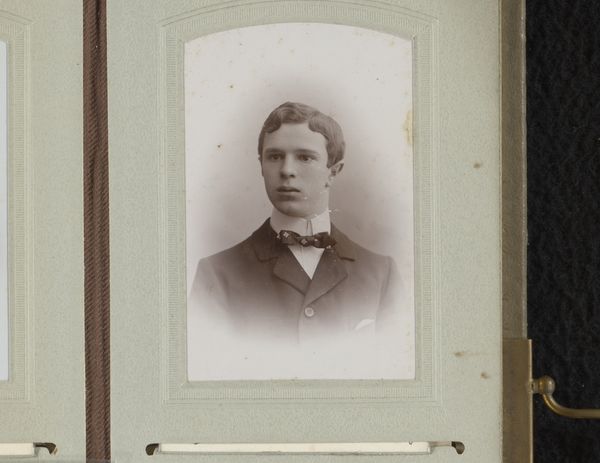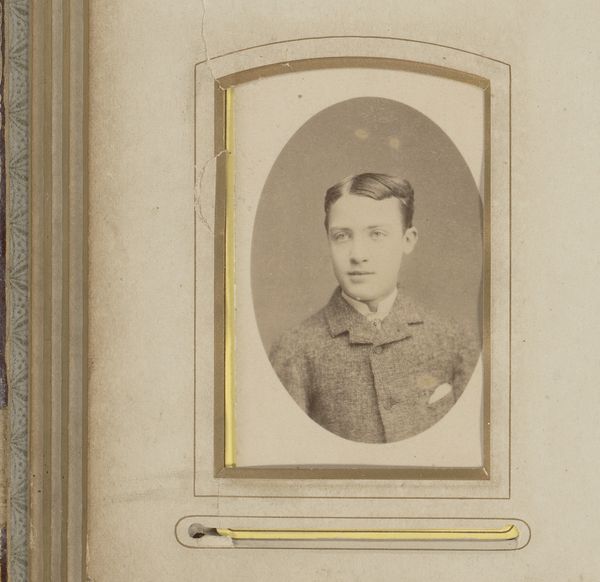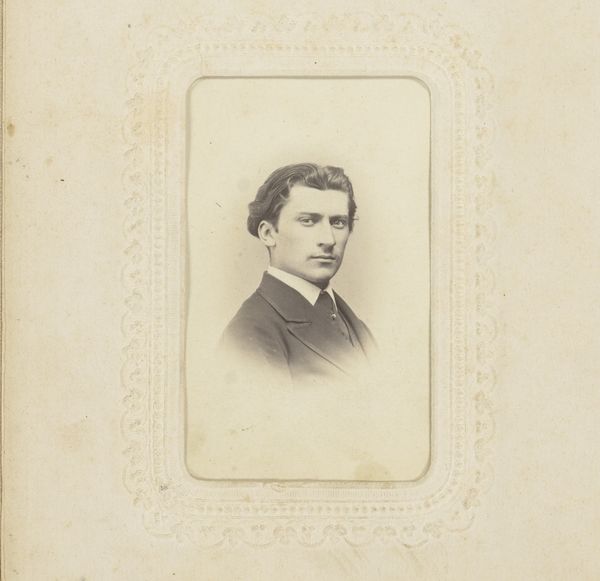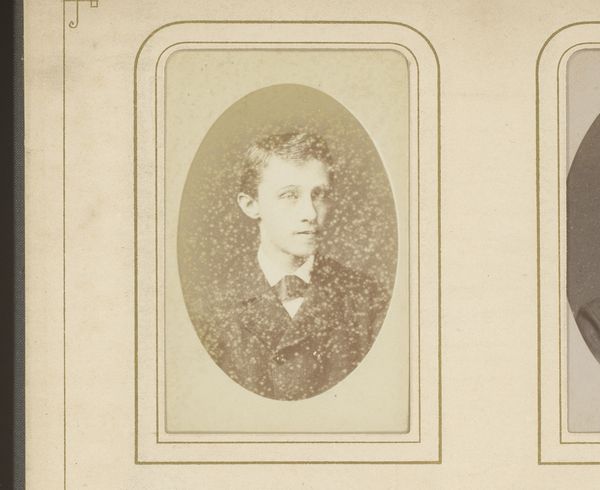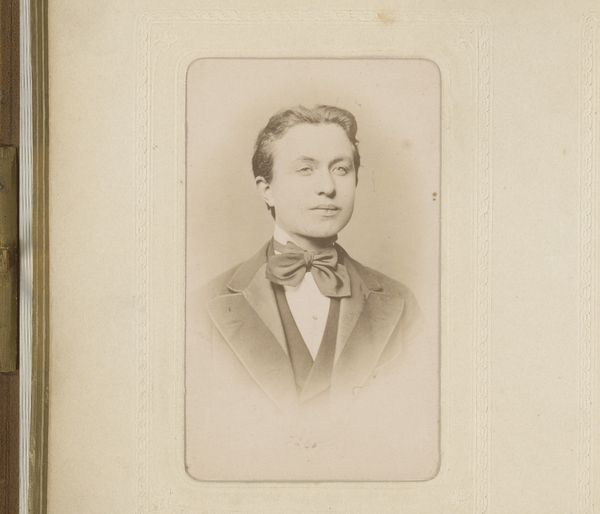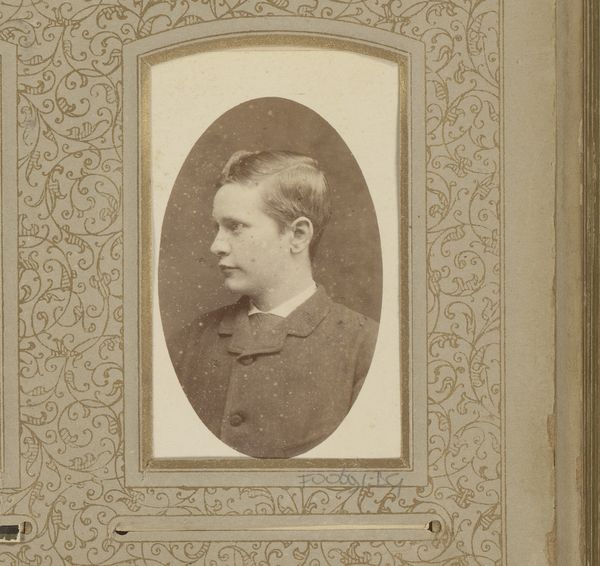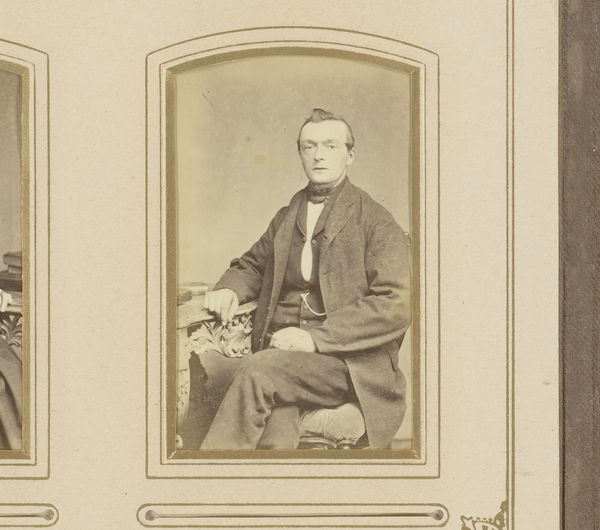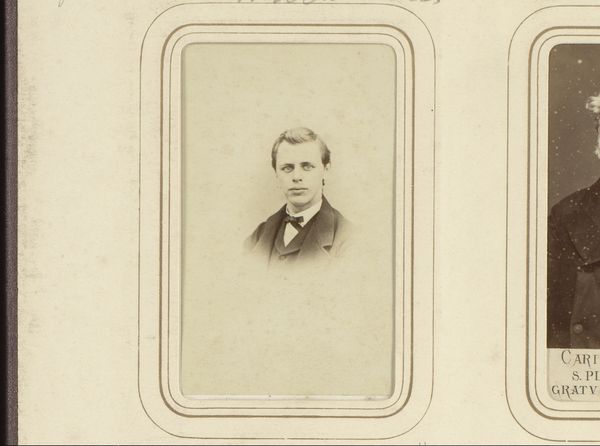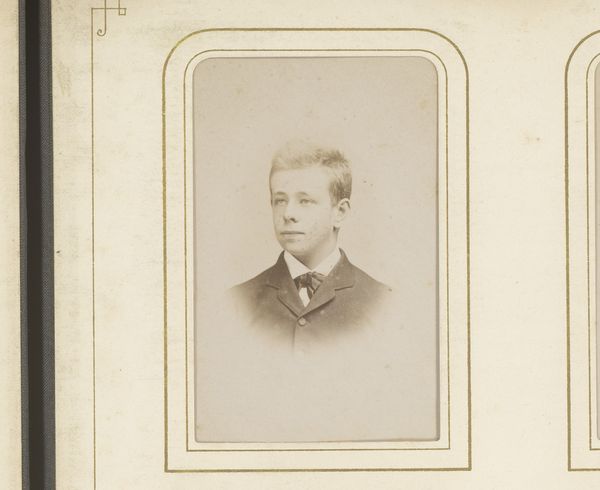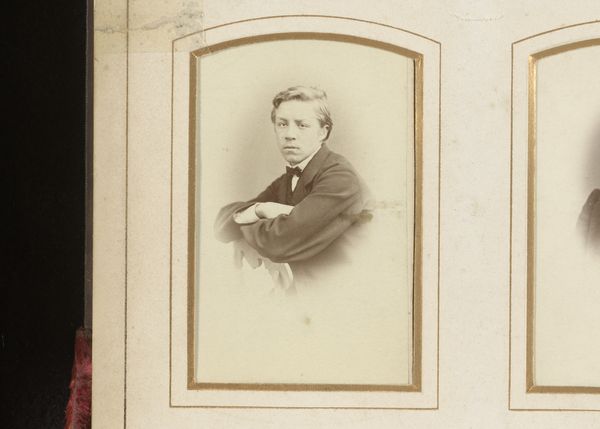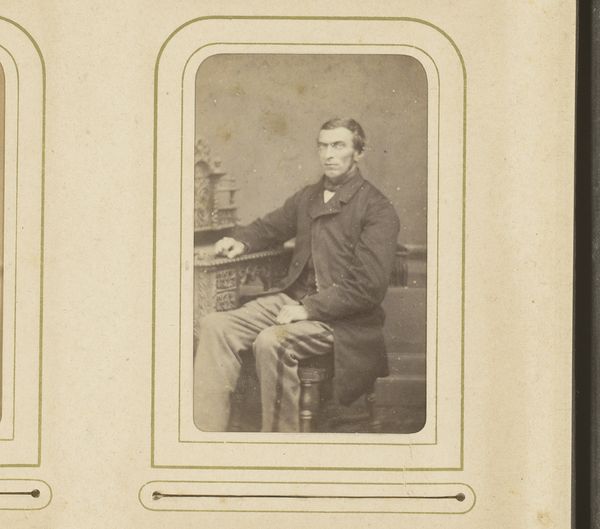
Dimensions: height 101 mm, width 60 mm
Copyright: Rijks Museum: Open Domain
Curator: This photograph, known as "Portret van een man", comes to us from between 1860 and 1900, and is attributed to L. Daillon. It is a gelatin silver print, which was quite popular during the era. Editor: I'm immediately struck by the somber tone. The limited tonal range, almost sepia, lends the portrait a feeling of gentle melancholy. Note how the oval vignette subtly softens the figure, but he still remains intensely serious. Curator: Indeed. The somber tones, though perhaps now an artifact of the printing process and age, do seem to suggest something deeper. In the romantic period, images were imbued with the emotional weight of memory, the capturing of a soul at a particular moment in time, often viewed as fragile and fleeting. Editor: Looking closer, the composition guides our gaze directly to his face. The soft, even lighting avoids strong contrasts, and creates an intimate, almost confessional atmosphere. I'm interested in the slightly off-center framing of his figure within the oval frame and the subtle details of his suit jacket and the high collar which subtly creates visual rhythm and holds attention in. Curator: These formal elements also signal societal values of the period. Consider that posture. The clothing suggests a certain degree of social standing and reflects the symbolism of self-presentation—a man of purpose and perhaps of some consequence, facing the future with determined stoicism. Editor: His gaze doesn’t quite meet ours, which contributes to the reflective mood. There is an averted eye, and the slightly unfocused quality makes it hard to say what is on his mind or what exactly he is worried about. The composition creates a sense of detached observation that may reflect a subtle cultural continuity through its own particular form. Curator: Ultimately, images like these grant us glimpses into personal and cultural histories. This portrait shows not just an individual, but hints at entire eras of hopes, beliefs, and sensibilities. Editor: Absolutely. For me, analyzing it is like peeling back layers of photographic technique, material components, and historical context, that altogether invites us to reflect on time and presence.
Comments
No comments
Be the first to comment and join the conversation on the ultimate creative platform.
